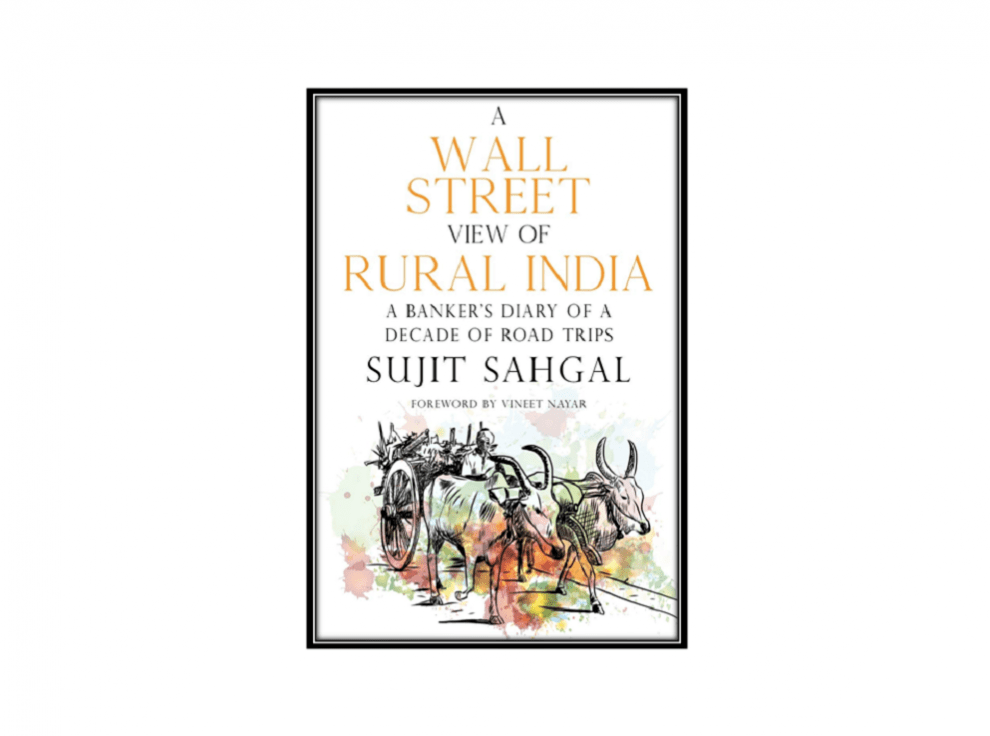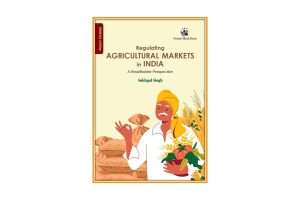Sujith Sahgal (2020)
Olympia Publishers,
London
ISBN: 978-1-78830-598-3
Price: INR 749 (paperback)/INR 286 (Kindle Edition)
No of pages: 175
A Wall Street View of Rural India: A Banker’s Diary of a Decade of Road Trips is a non-fiction book written by Sujith Sahgal, and published by Olympia Publishers, London. Sujith is an investment analyst and as the sub-title of the book states, the book is a summary of insights he gathered from his trips to villages in rural India.
Premise
The premise of the book is rooted in CK Prahlad’s popular idea of ‘The fortune at the bottom of the pyramid’; business firms make profits from the people in the lower economic class. This idea has led to reinvigorated interest among investors and firms to invest in rural India. The book narrates the author’s village immersion trips with investors on his quest to understand rural people and economy. Though Sahgal wears the hat of a financial market professional and approaches issues from an investor’s perspective, the book is centred around farmers, rural people, and their welfare.
About the book
The book follows a hybrid style of writing; a dairy-like narrative with chapters on topics based on his interactions with farmers and other stakeholders in villages. The author uses a simple language in his writing with a descriptive tone, which makes the book an easy read as compared to other academic books on this topic. Though the author uses a cautionary approach and stresses that the information shared in his book are just opinions, views and thoughts, and not facts, the book provides deeper insights into many of the issues in rural India. More importantly, the author has connected the dots and put the issues into a logical sequence, which makes for interesting reading.
The book is structured under five themes: 1. Earning and spending; 2. Bridge between earning and spending; 3. Infrastructure (market structure and supply chain); 4. Social attitudes; and 5. Future of demographics.
Chapters under these themes provide a list of the countless problems faced by farmers and rural households. The book dwells in detail on answering questions, such as – What constitutes a farmer’s income? How do policies, such as minimum support price and national rural employment guarantee scheme (MGNREGA) influence incomes? Why is there poor demand in rural regions even when there is a bumper harvest? How is availability and accessibility of credit leading to debt trap? And how is it that benign policies on ensuring credit supply lead to unintended consequence (debt trap)? The session on market structure and supply chain is of great relevance in the present context of ongoing debates on the Farm Bills. The book provides an insider view into the functioning of Mandis operated under Agricultural Produce Marketing Act, and the role of intermediaries (arhtiyas) in the supply chain. The book also looks at the extent to which initiatives like e-choupal, Kisan Credit Card, e-NAM can solve these issues. To summarize, the book provides a realistic insight into complex issues and some potential solutions.
Praise and Critique
The book discusses the systemic issues faced by farmers and rural households and highlights the possible positives. The major part of the book is, no doubt, focused on the issues farmers face, nevertheless it also discusses the broader issues of rural development, such as education, women’s empowerment and the future of farming and rural India. The author concludes the book in a few sentences with an optimistic tone regarding the future.
As stated before, the book follows a hybrid style, but it segues into narrations of experiences from the trips. Though these segues seem to be trivia, it would have been interesting if they were integrated with the topics discussed in the book. At times, the book seems like a monologue on issues faced by farmers, however, brevity and clarity make up for those oddities. The most insightful and interesting section of the book is the section on credit and banking, which happens to be the area of expertise of the author.
Target audience/Who should read it?
The book is a ‘must read’ for those who are interested in knowing about the rural economy and to those who have never travelled to interior villages. Specifically, it’s a good read for graduate students who are specializing in the field of rural development, agricultural economics, agricultural extension and policy. The book could be required reading for students doing Master’s in Business Administration (MBA) and post-graduate diploma in management (PGDM) in the field of Agribusiness, and rural development.
 Subash S.P is a Scientist at ICAR- National Institute for Agricultural Policy, New Delhi. Subash has a Masters in Agricultural Economics from Punjab Agricultural University. Prior to his assignment as scientist, Subash has worked with CIMMYT for two years where he was involved with conducting research in Nepal and Bangladesh. Subash loves a good debate (on anything and everything which interests him) and, an occasional cartoonist and a blogger. His current area of research is on policy analysis in the light of behavioural insights. You can reach him at subashspar@gmail.com.
Subash S.P is a Scientist at ICAR- National Institute for Agricultural Policy, New Delhi. Subash has a Masters in Agricultural Economics from Punjab Agricultural University. Prior to his assignment as scientist, Subash has worked with CIMMYT for two years where he was involved with conducting research in Nepal and Bangladesh. Subash loves a good debate (on anything and everything which interests him) and, an occasional cartoonist and a blogger. His current area of research is on policy analysis in the light of behavioural insights. You can reach him at subashspar@gmail.com.





Add Comment